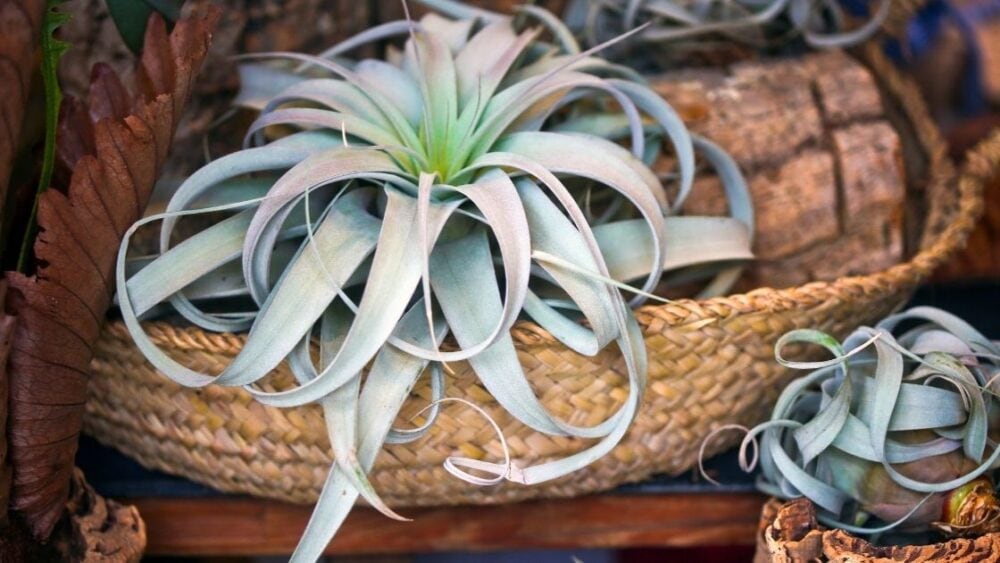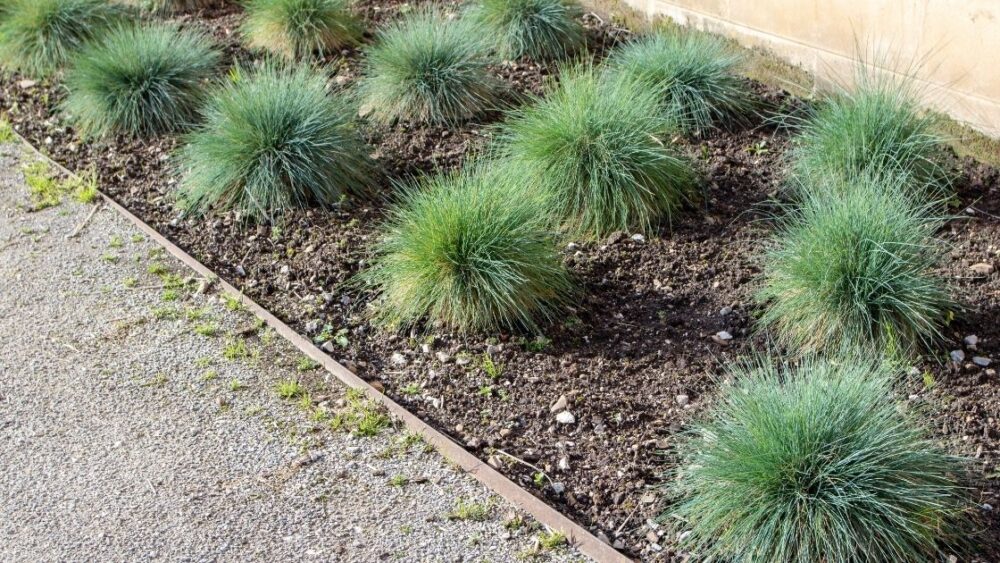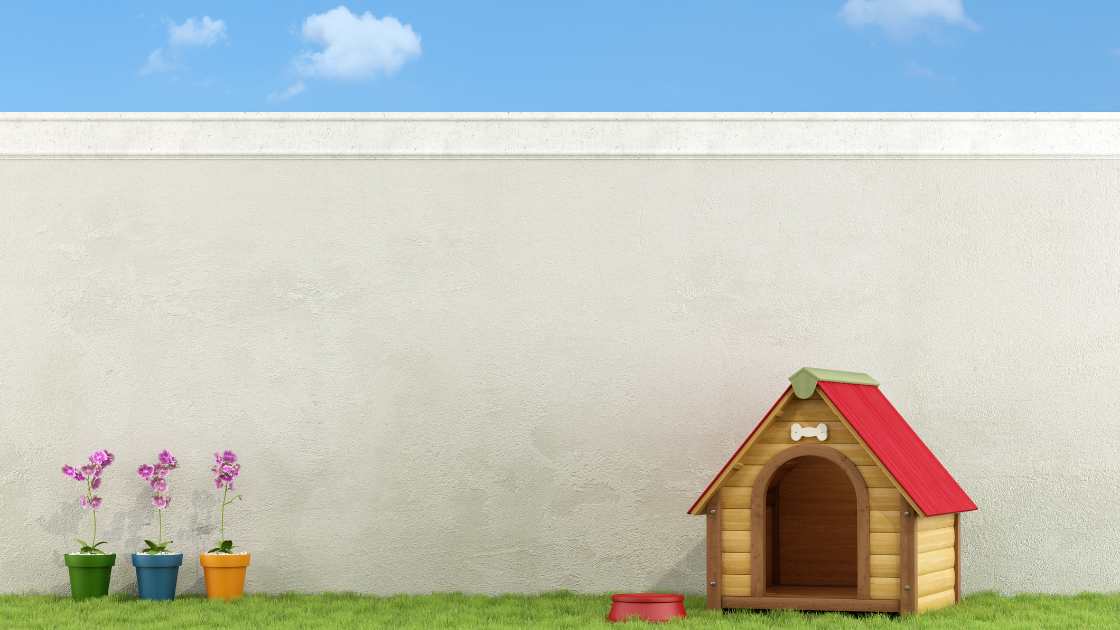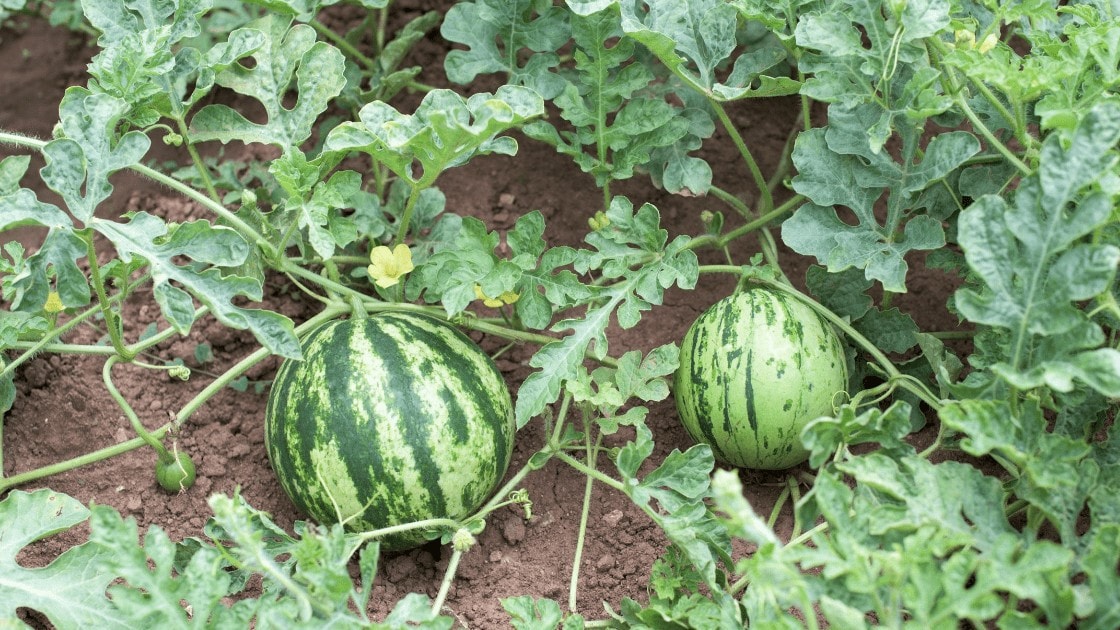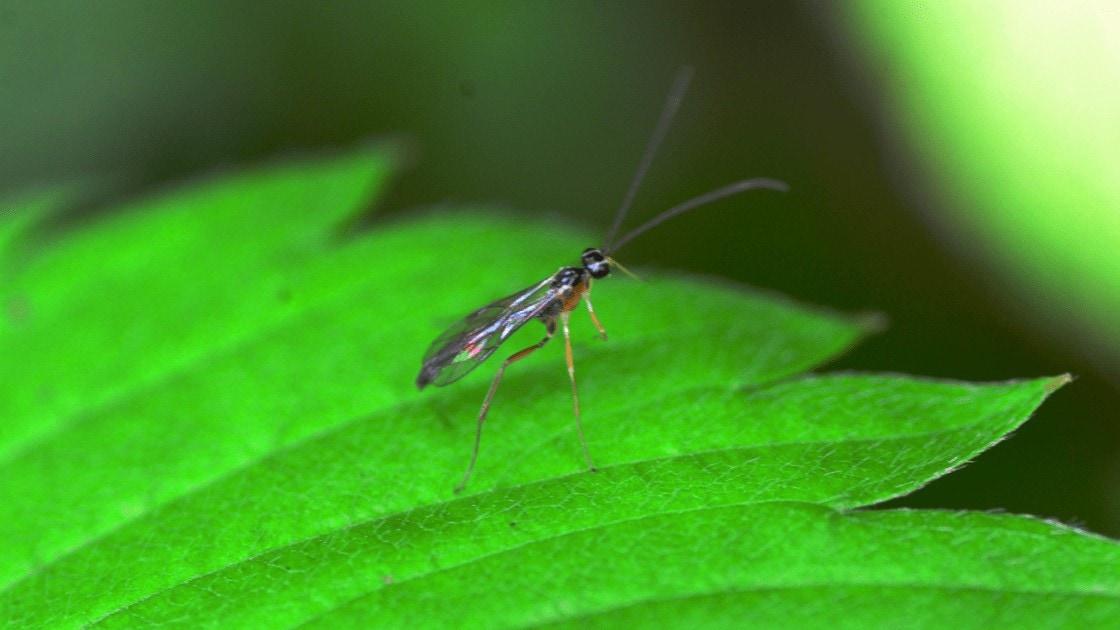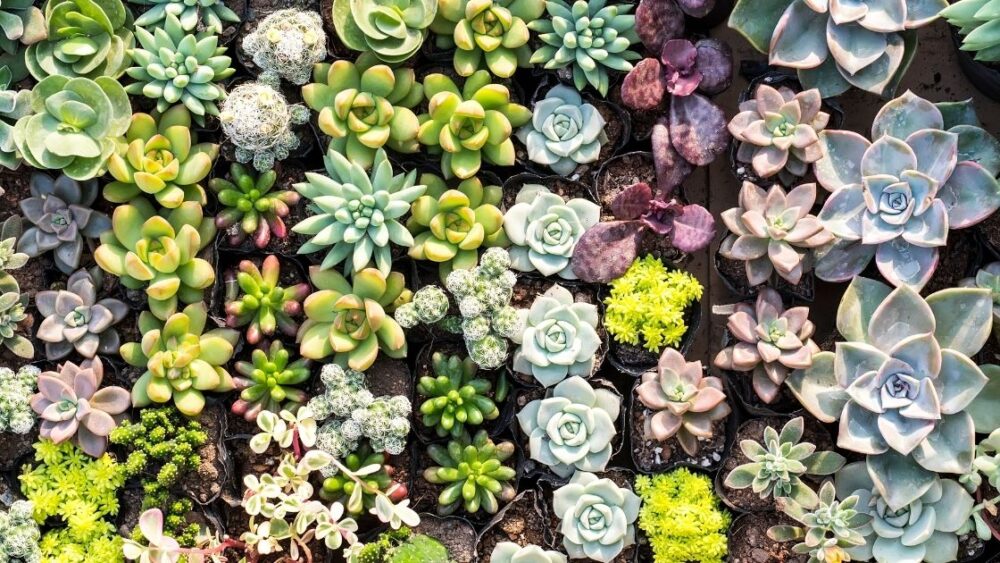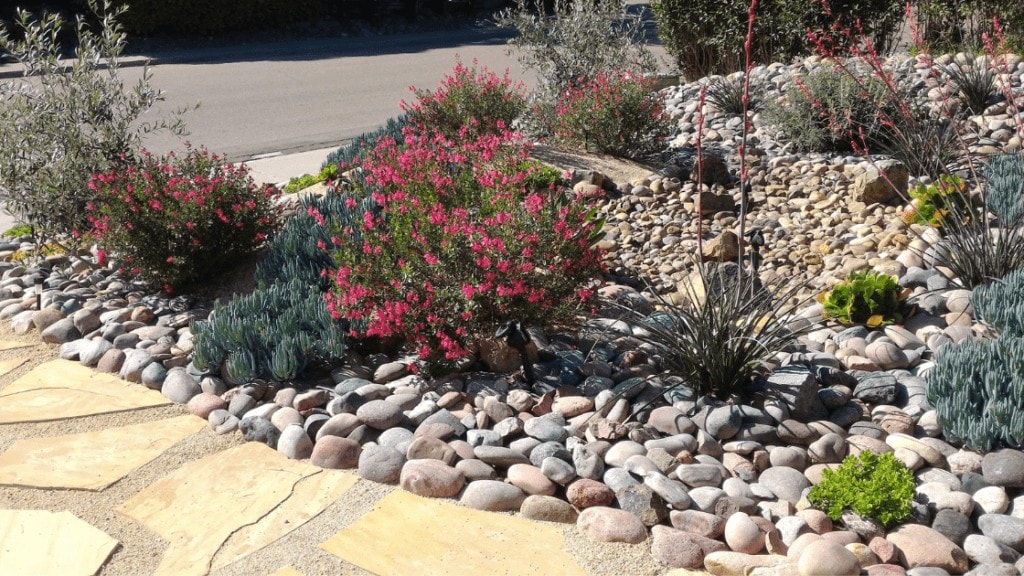
Are you thinking of switching to a water-conservative approach in your gardening methods? If yes, you have probably come across two terms on the internet: Xeriscaping and dryscaping. While these terms are often used simultaneously, they are not quite the same.
If you care to make the right decision and install the right design for your outdoor space, the following guide will help you. It’ll help you understand what each of these concepts are, their similarities and differences, and which one would be suitable for you.
If you are interested in all of this information, keep on reading!
Browse our Affiliate Products
What Is Xeriscape?
Xeriscape is a popular landscaping design that helps reduce and minimize irrigational needs. The plants and other botanical ornaments that are a part of this landscape require low maintenance and little water to stay alive in natural climates.
The name of this landscape comes from the fact that plants that require little irrigation are called xerophytes. These specific plants are ornamental and easy to grow in a desert or drought-struck areas. Xeriscape landscaping comes from a similar concept and is, thus, named so.
While it has been a popular trend almost everywhere globally, the Western United States has majorly embraced this landscaping design in the dryer regions. It is because xeriscape plants require little water to stay alive, and beautiful, warm, and dry areas of the world don’t have to worry about fancy irrigation systems and continuous water supply.
What Is Dryscape?
Dry scaping is a similar concept to Xeriscaping but not the same. It involves water -conservation, mulching, and low-maintenance setup. However, the difference lies in the variety of plants that can be a part of Dry scaping and Xeriscaping.
While the former strictly involves sheet wildflowers and succulents, Xeriscaping is more lenient and includes succulents, shrubs, trees, and flowers.
What Is The Purpose Of Creating Xeriscape And Dryscape Landscapes?
Saving water
As discussed earlier, the first and primary benefit of Xeriscaping and dry scaping is water conservation. Drought-struck regions of the world or people who generally want to reduce their water consumption in their gardens tend to go for these landscape designs.
Apart from areas facing water-deficient conditions, this particular choice is also great for those who lean towards eco-friendly gardening.
Low maintenance
Whether you lack supplies, finance, or time to take care of your botanical collections, Xeriscape and dry scape landscape designs are the best choices. They don’t require a lot of heavy or frequent watering, fertilizing, or pruning. Other basic plant requirements such as repotting and sun protection are also not problems with plants in these setups.
Preservation of native plant species
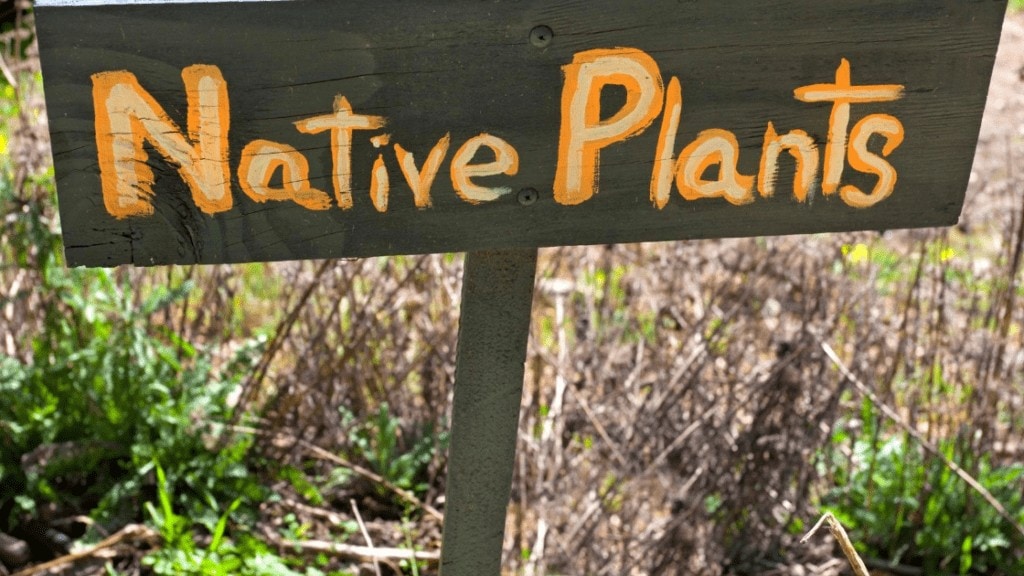
Many times, native low-maintenance plants stay out of the spotlight and become less and less popular. It is ironic because these particular plants are well-trained to live in their present location and climates. It means that they will thrive best in your xeriscape setups, and you will be able to showcase them, complete your botanical garden, and preserve some essential species.
Freedom In Creativity in creating Xeriscapes and Dryscapes
As with any new project, creating your back or front yard space allows you the freedom to be as creative as you want. With creating such landscapes you can use just about any material to give it a certain look. Many individuals choose the rustic look because finding old materials are randomly available. You are not bond to any rules, you are able to create your very natural haven.
Also, there are a variety of different plants, shrubs and bushes to choose from. Your imagination is the only limiting factor. Check out this article for what is possible for your space by clicking here. Architecturelab.net/xeriscape inspiration and ideas for small yards/
To find a wide variety of succulents, Check out our affiliates below.
What Are The Differences Between Xeriscape And Dryscape?
Types of plants for each

As discussed earlier, xeriscape plants include more variety and versatility in terms of their types and species. They include perennial and annual flowering plants, shrubs, trees, and gorgeous succulents. These plants are fair to highly drought-resistant and gorgeous-looking as ornamental garden structures.
In contrast, dryscaping plants have more strict criteria, including only succulents and wildflowers. Even these flowers are also tolerant to water-deficient conditions and have a tough exterior to limit moisture loss, did not have as much variety as Xeriscaping.
What Type Of Weather Do Each Require?
Xeriscaping plants are fairly temperature-resistant, but they are not anywhere near the tolerance levels of dryscaping plants. They require maintained levels of temperature, humidity, and sunlight. Sudden or frequently extreme fluctuations in the environment can damage the growth of these plants.
However, dry scaping plants are more tolerant to high temperatures and harsh weather.
Xeriscape And Dryscape Watering Techniques
Drip lines irrigation
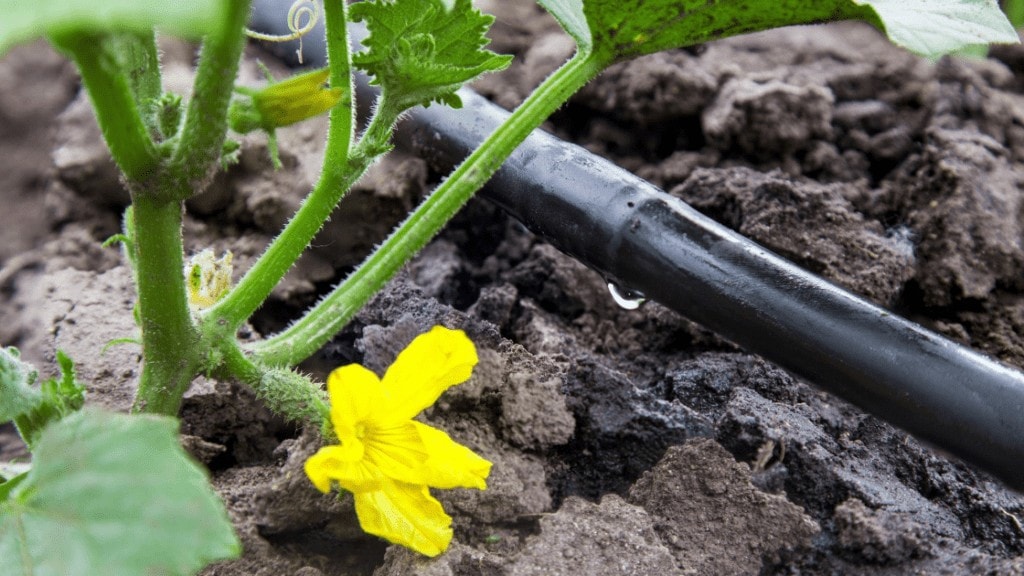
The drip line irrigation system involves long plastic pipes that are placed low near the ground. These pipes disperse drops of water at regular intervals, giving the method its popular name “drip irrigation.” You can control and manipulate the amount of dripping water according to your preferences and requirements.
The pros of this irrigation system include reduced water waste, cost-effectiveness, and reduced risk of over-watering. However, drip lines also have certain drawbacks, such as frequent maintenance checks and risk of damage to the pipes because they are exposed. Plus, it can only dispense a small amount of water at a particular time.
You can read more on about drip irrigation and succulents by clicking on our link here. Outdoorgardenaccessories.com/garden ideas: how effective is drip irrigation on succulents/
Sprinkler irrigation
In contrast to the drip line irrigation system, the sprinkler system disperses more water and covers more ground. Plus, the sprinkler pipes lie underground, which is also a significant difference between the two irrigation systems.
This method’s advantages include reduced likeliness of plugging, more area coverage, the facility of a timer, and safe pipes that lie underground.
However, the cons of using a sprinkler system include a higher risk of water wastage and damage to the sprinkler heads. It can also sometimes lead to soil erosion.
If you are interested on reading more about sprinkler systems, read more by clicking here. Outdoorgardenaccessories.com/sprinkler systems: pros cons and common uses for gardens/
How often should you water them?
Plants that don’t require a lot of water to thrive tend to be over-watered quickly. Hence, you must make sure that the amount and frequency of watering remain in check.
The best way to see if the plants require a watering session is to feel the soil’s texture. If you think the top few inches have begun drying, you can re-water the plant.
Generally, watering once or twice a week is good enough for drought-resistant and water-conserving plants.
What Are The Seven Principles Of Xeriscape?
If you start proceeding with this design, you must understand the concept behind xeriscape landscaping. The following seven principles will help you familiarize yourself with this landscape design.
1. Conservation of water
The first and foremost principle of this landscape design is to conserve water. Reducing the amount of water investment and maximizing natural precipitation is an essential part of the xeriscape landscaping concept.
2. Improvement of soil
Good soil is essential for a landscape that conserves water. The ideal soil texture will drain effectively not to accumulate excess water but also store whatever is needed.
Waterlogged soil can suffocate the roots of a plant and kill it before finding out what’s wrong. Thus, your soil needs to drain well.
Similarly, if you use a dry soil texture that cannot store water, your plant will become dehydrated soon and give up.
For this, the soil you use should be fertile, organically enriched, and adequately aerated. You can add compost as a useful soil amendment to improve its texture and growth capacity.
You can also get soil tests to determine whether your soil’s pH and nutritional value are right.
for more information about soils click here. Outdoorgardenaccessories.com/the best soil for all types of-gardens/
3. Limiting the turf areas
Reduce the turf areas or use turf that requires lesser amounts of water. Doing this will increase the water-conserving capacity of your garden area while maintaining the outlook and visual appearance. Do a little bit of online research or ask your garden expert for good turf options.
4. Usage of appropriate plants
If you plan to set up a xeriscape design, make sure you select and choose appropriate plants for it. A popular recommendation is to use native plants in your region.
The basic criteria to choose the right plants for your setup is the following:
- The plants should be drought-resistant and should thrive in low water conditions. These plants are mostly, but not necessarily, succulents with small, thick leaves and fuzzy, glossy, and silver-grey foliage. All of these characteristics make them drought-resistant and help them conserve water.
- These plants should also be small enough for easy display and care.
- Pay special attention to their growth habit. Doing this helps you understand and predict the plants’ pruning needs and requirements.
- You can also use trees as appropriate plants for your xeriscape setup. These large plants will help block wind, shade the soil, and minimize evaporation.
5. Mulching
is a technique that helps conserve moisture in the soil and maintain temperature to avoid erosion. It also helps block out any weeds growing nearby. You can use leaves, pine needles, coarse compost, bark, gravel, or wood chips as mulch near the plants. Organic mulch is the most suitable way to go because it incorporates the ground or soil and works effectively. However, to make sure that the mulch does its work efficiently, it needs to be a few inches and often requires reapplication. You must ensure that you don’t leave an area of bare soil.
For those DIY’ers, amazon offers a mulching system as shown below.

6. Irrigation
While it is true that xeriscape landscapes do not require large amounts of water, they still need proper and efficient irrigation. The ideal watering routines for these landscapes are deep and less frequent.
The watering amount and frequency should be enough to keep the soil hydrated but not soaking wet.
Experts recommend drip irrigation systems and soaker hoses for easy and efficient irrigation in xeriscape settings. They are a popular recommendation because they transfer the water straight to the plant’s base and minimize evaporation and moisture loss.
Another advantage of these irrigation systems is that they are slow and ensure maximum root absorption without any pooling or erosion.
7. Maintenance of your landscape
Last but not least, xeriscape designs should be low-maintenance and water-conserving. You must make sure that there is no weed growing near the plants or in the mulch. In such cases, increase the mulch layer’s thickness or remove the weed as recommended by your gardening expert. Also, make sure that you don’t remove or reduce too much turf area since tall grass is beneficial for these plants’ roots. They provide shadow to the plants and minimize evaporation and loss of moisture from their leaves.
Avoid overwatering, don’t over-fertilize, and protect your Xeriscape from weed, pest attacks, and infections.
Do The Seven Principles Of Xeriscape Work For Dryscape?
Generally, the overall concepts of these two landscape designs are the same. Both of them primarily focus on reducing water-usage, lowering maintenance requirements, and maintaining aesthetics of the outdoor areas.
Thus, the principles of Xeriscaping are also applicable for dry scape setups.
Is It Expensive To Implement A Xeriscape Or Dryscape Design?
The up-front cost of these designs is indeed high.
If you already have a traditional lawn, tearing it down and creating a new landscape set up on top can be quite overwhelming on the wallet. Plus, this new landscape design also requires its separate irrigation system. This system is also to be installed before you move ahead with redesigning. Once the Xeriscape is set in place, it will be hard to establish the irrigation system.
So, yes, it can be quite expensive to implement a xeriscape or dry scape design.
Is It Financially Feasible In The Long Run?
The best part about these landscape designs is that their maintenance cost is next to nothing once they are set up. The irrigation systems work on their own, and you don’t have to spend a lot of time and money on their care. Thus, they are financially feasible in the long run.
Are There Any Adverse Outcomes Associated With Xeriscape And Dryscape Designs?
Overall, there are only two downsides to installing these landscape designs.
One, they are quite expensive in terms of their up-front cost. Since they require a particular irrigation system, setting up this garden type can be a little more costly than a typical traditional lawn. Plus, if you already have a lawn and want to remove it to convert to dry scape or Xeriscape, that will cost you even more extra bucks.
Moreover, because you reduce the turf areas and install stones instead, your outdoor garden’s overall functionality is reduced by several folds. Children cannot play sports, and you cannot have the same techniques that you used to have in your traditional lawn.
Final Thoughts
As you have probably established, the differences between the two terms Xeriscaping and dry scaping are not textbook material. They are slight but significant, and understanding them helps you pick the right landscape design for yourself.
Hopefully, all the Xeriscape and dry scape information given above will help you make an informed choice. Happy gardening!






